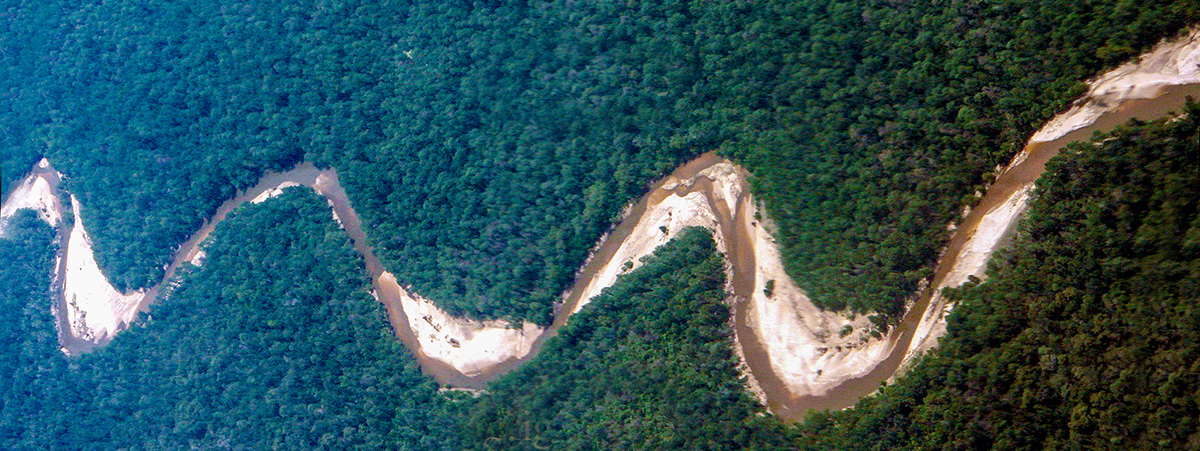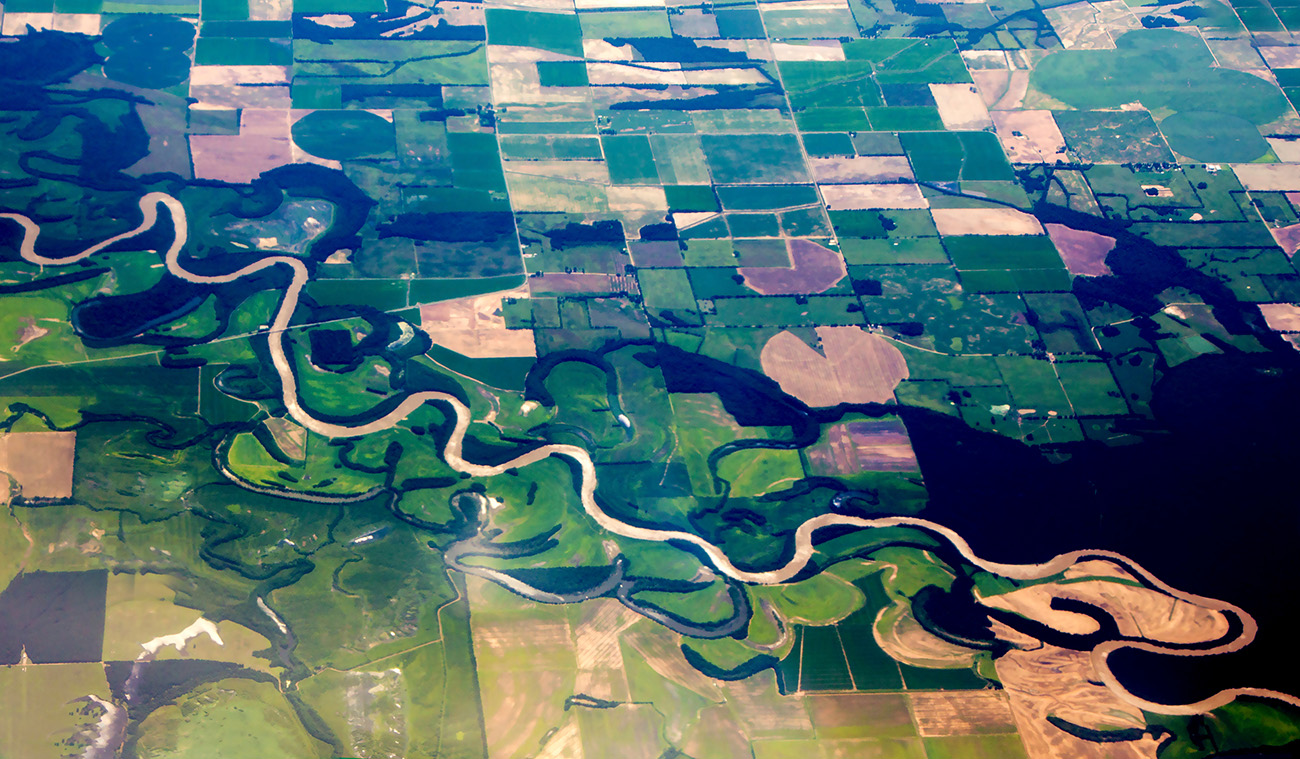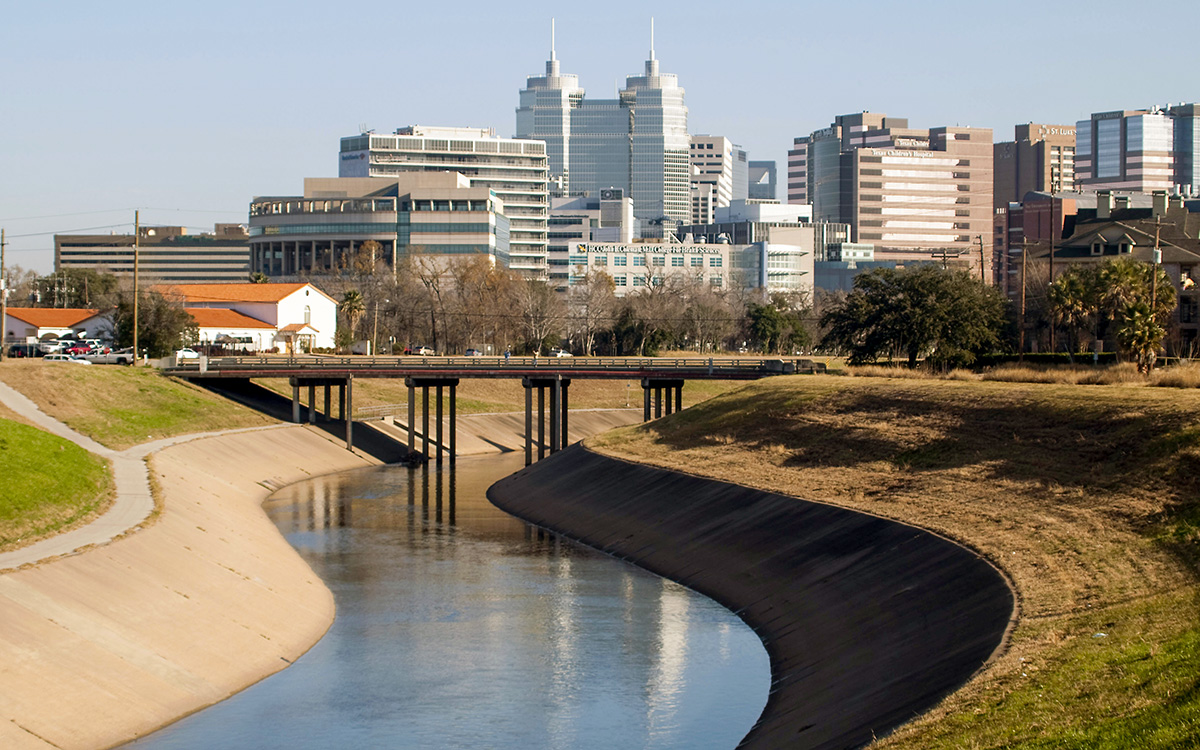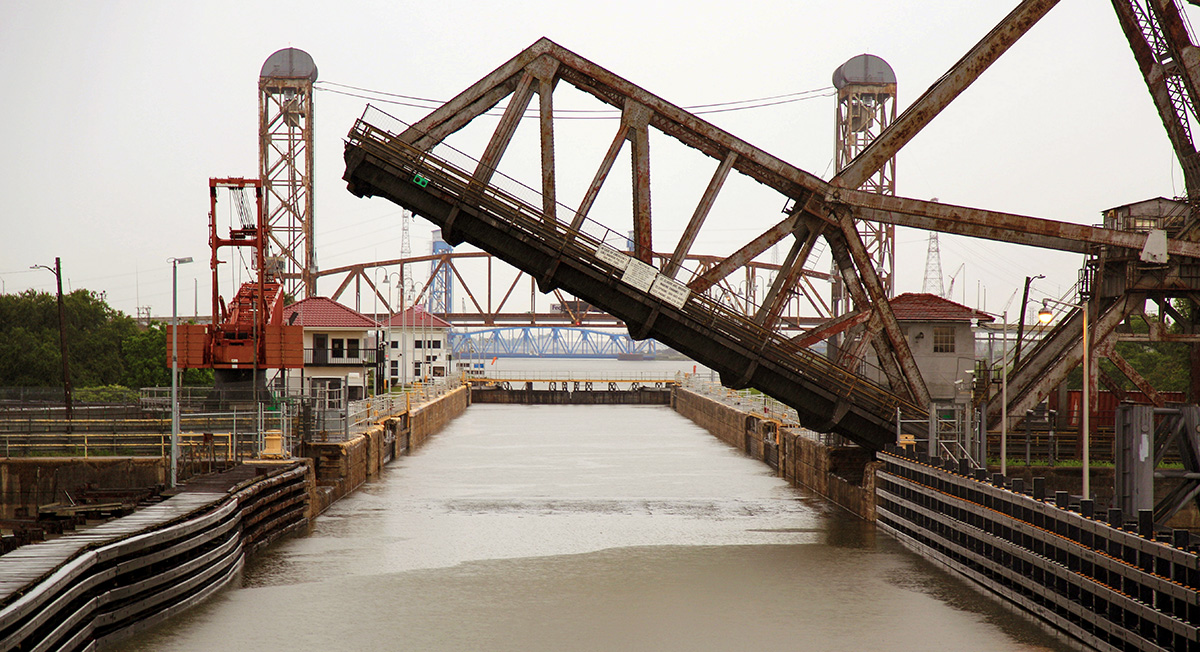Our Rivers Meander
Today, our rivers meander. The University of Houston presents this series about the machines that make our civilization run and the people whose ingenuity created them.
Now: Why doesn't a river just flow straight ahead? It would in a perfectly straight channel. But no riverbed is perfect. And the mechanics of fluid flow show that the slightest bend creates a downward flow on the outer side of the bend. That causes the water to move downstream with just enough helical motion to scour the outside. That slow swirl carries silt across the bottom, then dumps some of it on the inner side.

Silt deposition in a meandering bayou
So the bend grows, and grows, until it forms a circle. It finally closes in on itself and the flow is once again straight. Then the process repeats. The result? Any stream is soon littered with so-called "oxbow lakes" that are nipped off and left behind.

Typical meandering bayou in eastern Texas or western Louisiana.
Notice the scatter of oxbow lakes on either side of it.
Now: We can ask two kinds of question about anything that happens: We can ask "How?" and get a mechanistic answer. Or we can ask "Why?" and get what we call a teleological answer. Ask: Why does Nia study math? The answer, "Because it was assigned," tells us the mechanics of getting her to study.
But it takes a teleological answer to tell her purpose, to tell us Why. Nia studies math so she can become a rocket engineer. We engineers never give teleological explanations for natural phenomena. We must understand the mechanics of how things work.
Yet look at what happens during meandering: That helical motion keeps pushing eroded silt forward. Otherwise, it'd simply accumulate on the bottom and clog the channel. That motion keeps sweeping silt along until it builds deltas out on our coastlines. A teleological explanation of meandering might say that its "purpose" is to keep silt from blocking the flow.
We engineers would never say that meandering occurs for that purpose. We would say only that it has that effect. And yet ... nature has so many mechanisms for regulating itself. We're constantly tempted to see nature as acting purposefully.
Just think how precious real estate becomes, as our population grows. We can't just let our waterways meander. So we keep sheathing them in concrete. Now they can neither scour nor meander. But that means trouble:

Concrete holds Brays Bayou in place as it flows through Houston's crowded Medical Center.
Meandering inevitably leads rivers to lurch into new waterways. The lower Mississippi did just that every 800 years until the 19th century. Then we built levees to hold the River in place. The Mississippi was due to leave its present course, and burst into the Atchafalaya Basin, a century and a half ago.

These New Orleans locks lower ships some 14 feet from the highly "contained" Mississippi River, down into Lake Borgne which links to the Gulf of Mexico.
Instead, New Orleans now has a tiger by the tail, a river increasingly restive in its chains. We know we should never speak of a river "wanting" to do this or that. But the mighty and restive Mississippi really does seem to yearn for that next giant step in its centuries of meandering.
I'm John Lienhard at the University of Houston, where we're interested in the way inventive minds work.
Click here for a video version of this episode. (This video was produced by the UH Cullen College of Engineering Office of Communications.)
See the Wikipedia article on "Meander"
For more on the Mississippi "wanting to" move into the Atchafalaya Basin, see J. McPhee, The Control of Nature. New York: Farrar Straus Giroux, 1989, Chapter 1, "Atchafalaya." See also this NASA article: and this Engines episode:
This Engines episode looks at Albert Einstein's theory that a Coriolis acceleration affects the direction of meandering.
This Wikipedia article offers a philosopher's treatment of teleology.
I'm grateful to Ralph Metcalfe for his counsel. Photos by J H Lienhard.
This episode was first aired on February 1, 2021